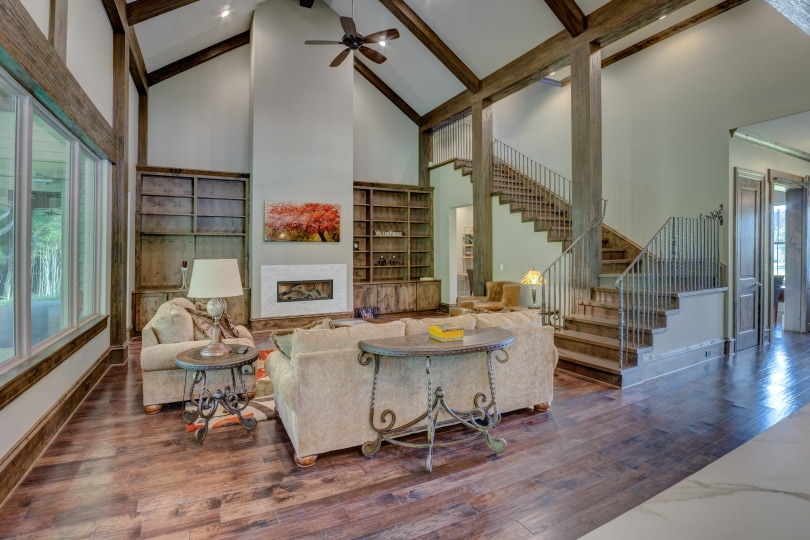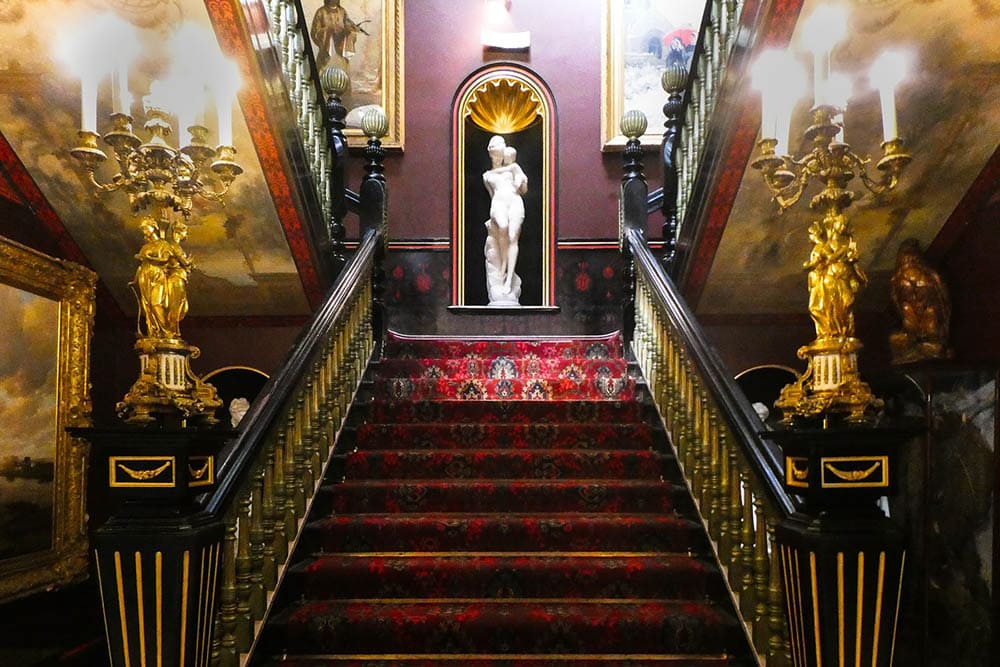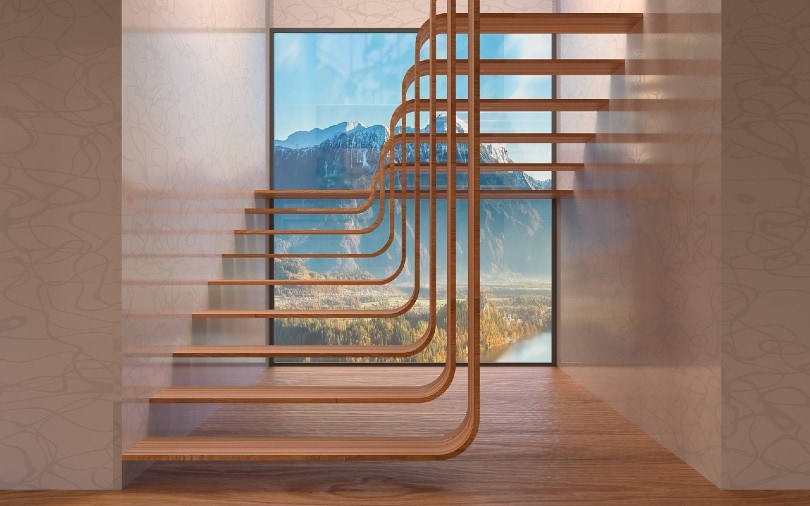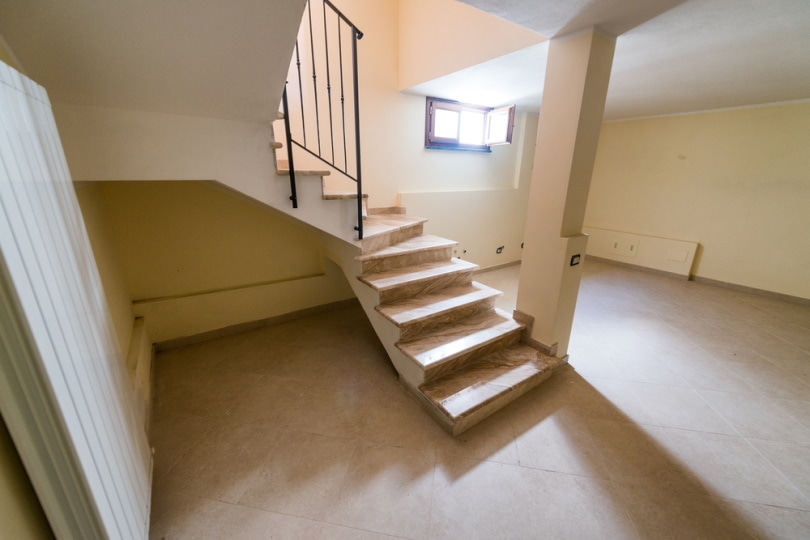When Were Stairs Invented? Origins & History
-
Pete Ortiz
- Last updated:

Staircases are an architectural delight that has existed since ancient civilizations. They have held different meanings and functions throughout history.
From being a reliable way to access higher grounds to being a symbol of enlightenment, stairs have come a long way. And yet, they still hold an important place in the present and future of architecture.
That said, here’s how the staircase has evolved for thousands of years. Stairs date back to 6000 BC.
Stairs in Ancient Civilizations
We can trace the origins of the staircase to about 6000 BC. Ancient civilizations relied on stairs mostly for their convenience in moving to higher or lower levels. They also incorporated them into nature to allow them to reach higher terrain.
Soon enough, humans began using staircases as a symbol of seeking divine enlightenment. Stairs that had a religious meaning attached to them first appeared in China around 55 BC. Confucius may have used them to connect with the earth and sky.
The Egyptians incorporated staircases in the form of pyramids. These staircases were thought to get them closer to their gods. Mayans, Indians, and Mesopotamians also had religiously symbolic staircases.

The Inspiration Behind Ancient Staircases
Ancient civilizations primarily built staircases to reach higher levels. The first reason was that being in a higher position protected them from the dangers below them, whether from wild animals or other people.
They made their staircases from stone. However, they could have used other materials, such as wood. But the passage of time might not allow us to confirm whether other materials were used in staircase construction.
Staircases in the Renaissance Era
Renaissance architecture is reminiscent of ancient Greek and Roman culture. Their staircases reflected the emphasis the Romans and Greeks placed on mathematical precision. Curved and spiral staircases can be traced back to the renaissance era, where they also served as a defense tool.
In that era, spiraling a staircase (specifically in the clockwise direction) gave an upper hand to a person descending the stairs against an attacker climbing the stairs. The Bramante Staircase in the Vatican Museum is the most popular Renaissance Era staircase.

Inspiration Behind Spiral Staircases
Stairs evolved from being a functional architectural component to becoming a military concern thanks to the widespread wars during the middle ages. Stairs became a means to escape the enemy and have an advantage over them.
Stairs in castles and other defensive structures were planned carefully with precision and safety in mind. They allowed militants to position themselves along the staircase in defensive positions where they had more edge over an incoming attacker.
Modern Staircases
Modern staircases borrow from their predecessors, with the difference that today’s materials are different and more ambitious. The contemporary staircase can be made from various materials, from wood and stone to glass.
Today’s staircases mostly focus on aesthetic elements. However, they have also evolved as a backup plan for buildings equipped with modern vertical transportation systems like lifts and escalators.

Safety
Modern staircases must be built with safety in mind, creating the need for building codes and best practices when building on installing them. They are also designed with emergencies in mind to provide a safe exit from buildings should emergencies arise.
Accessibility
Modern architects are also moving towards accessibility and convenience when using them. The focus on accessibility is expected to continue into the foreseeable future. The stairs at Robson Square, Vancouver, are an example of where we’re moving toward in terms of staircase design.
The stairs are a combination of regular stairs and a wheelchair ramp. The stairs also feature low rises making them convenient and universally accessible.

Escalators
A history of staircases would be incomplete without talking about escalators. An escalator is a moving staircase that can move you to a lower or upper level of a building. Escalators can trace their history to 1859 when Nathan Ames patented the first escalator (or revolving stairs).
Jesse W. Reno was the first person to produce a working escalator which was installed in New York City’s Old Iron Pier in 1896. In the next year, Charles Seeberger made the first commercial escalator. Both Reno and Seeberger sold their patents to Otis Elevator company in 1911.
Escalators in the 20th and 21st Centuries
In the 20th century, manufacturers developed and marketed their escalator products based on the inventions made in the 19th century.
Otis Elevator Company was a major player in the market, building its designs after the patents from Reno and Seeberger. They also improved on their designs and powering mechanisms resulting in the escalators we know today.
Conclusion
Old as their history is, stairs remain a functional architectural addition to buildings. Today’s staircases have evolved from a combination of the efforts made by previous civilizations and builders, leading us from simple stairs to escalators. You can bet the evolution will go on.
Featured Image Credit: Steven Ungermann, Unsplash
Contents


